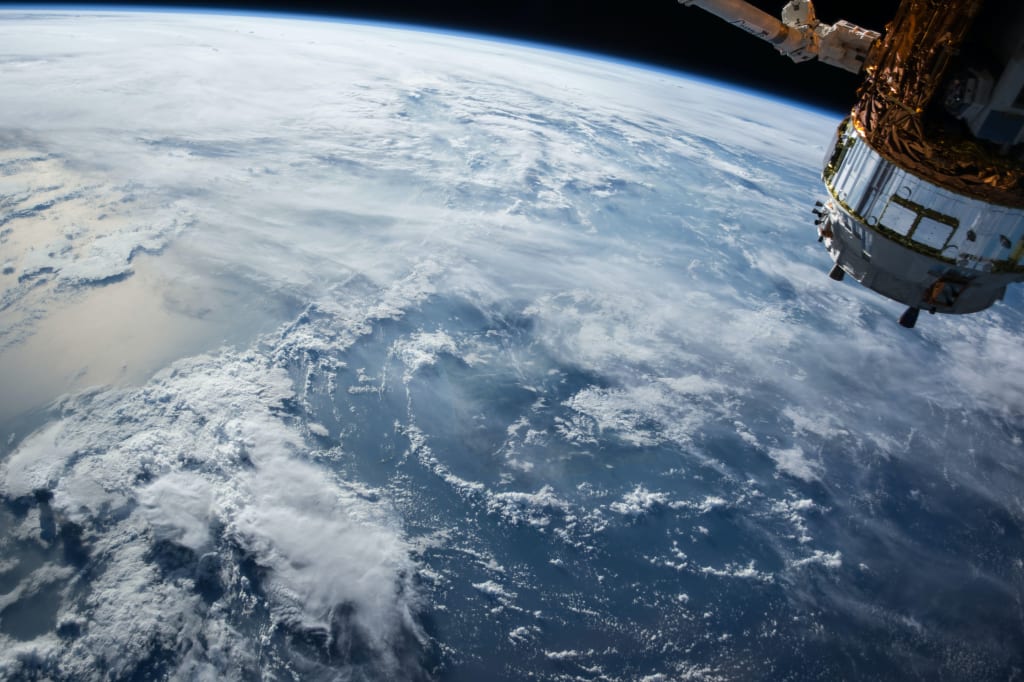Planetary defense test, crashing spacecraft into asteroid at 15,000 miles per hour
Planetary Defense Test

NASA will smash a spacecraft into an asteroid at 15,000 miles per hour for the first time in an effort to figure out how to divert a potentially deadly asteroid to prevent a potentially catastrophic collision in the future.
According to a NASA statement, there is a mission called the "Double Asteroid Redirection Test," which is scheduled to launch on November 23 at 10:20 p.m. PST.
The mission will hit the asteroid's surface with a high-velocity spacecraft of about 15,000 mph, destroying the spacecraft on impact.
The mission could help the world's space agency figure out how to divert a potentially deadly asteroid so it doesn't hit Earth. Thereby preventing possible catastrophic collisions in the future.
Asteroid hits Earth
In fact, asteroids often attack the earth, because the earth is protected by a thick atmosphere, and they are generally not very large as rocky celestial bodies, so the damage they cause is usually negligible.
But if it's a big, car-sized asteroid hitting Earth, it has to be taken seriously.
During the collision of the asteroid with Earth, a powerful explosion will occur. Its power is comparable to that of billions of atomic bombs exploding at the same time. At the same time, it is accompanied by a strong sound that cannot be tolerated by the human ear.
During the explosion, the powerful explosion releases powerful thermal energy that heats the Earth's atmosphere to +1500 degrees. This will inevitably lead to forest fires.
Within 1,200 kilometers of the epicenter, all living things will be burned. At the same time, a powerful blast wave will destroy buildings within a radius of 1,000 kilometers.
Subsequently, temperatures around the world will drop dramatically, and sharp cold snaps will have a negative impact on ecosystems. Cold temperatures and acid rain can kill plant life. Without plants, herbivores would die, which would lead to the extinction of natural enemies. Life will be without food.
In addition, carbonate rocks will also be destroyed in this disaster, and they will produce a large amount of carbon dioxide when they dissolve, which will eventually cause the greenhouse effect.
About 66 million years ago, an asteroid about 15 kilometers in diameter collided with our Earth, destroying the dinosaurs and eventually forming today's Hicksloo Crater.
The planet wreaked havoc at the time, as the impact generated energy equivalent to more than 90 trillion tons of trapezoidal explosives and triggered a huge tsunami of up to 100 meters high.
During the impact, he released a lot of energy that eventually vaporized the asteroid and killed most life on Earth. After the fall, a 180-kilometer-wide crater was formed in the Earth's crust.
The mission is to assess whether it is possible to divert the incoming celestial body to avoid a mass extinction event like the one seen 66 million years ago.
the program
The program is an asteroid defense program for the Double Asteroid Redirection Test, a technology called a kinetic impactor.
Essentially, he's shooting one or more large spacecraft into the path of an oncoming asteroid, thereby altering the motion of the space rock.
The test spacecraft is scheduled to launch from Vandenberg Air Force Base in California and travel through the atmosphere on a SpaceX Falcon 9 rocket.
The program targets a double asteroid called Dimorphos, two space rocks moving in tandem, surrounded by a larger asteroid the size of a football field about 2,600 feet (780 meters) in diameter. Made up of smaller "little moons" about 525 feet (160 meters) in diameter, half a mile wide, called Didymos.
In the plan, NASA will target the small moon, hoping to slow the rock's orbit through a direct impact enough to allow Earth-based telescopes to study the effects of the Didymos double asteroid in detail.
Dimorphos
The word Dimorphos means "two forms", which means twins, and the word comes from Greek.
The spacecraft is about the size of a golf cart and is powered by an array of solar panels.
As it approaches the asteroid, the autonomous navigation system will allow it to find Dimorphos and target it, hitting it at 14,763 miles per hour.
But the collision is expected to change Dimorphos' speed by less than one percent, though it could shave minutes off the time it takes to orbit Didymos. And in those few minutes, an onboard camera called DRACO will capture the shock.
Just before the crash, the spacecraft will also launch a satellite provided by the Italian Space Agency, which will record the impact and send images back to Earth. Expect to see a bright flash, followed by a cloud of dust.
Last month, NASA updated its forecast for Bennu, one of the most dangerous asteroids known.
This time around, Bennu is expected to reach the size of a building. This is also the latest calculation of the Bennu probability. The probability of hitting Earth in the next 300 years has also been revised to 1 in 1750.
In September, the pair will pass within seven million miles of Earth, meaning astronomers on the ground can observe the impact of the impact.
Once the Double Asteroid Redirection test vehicle separates from the launch vehicle, it will cruise through space nearly 7 million miles (11 million kilometers) from Earth for about a year before colliding with it in late September 2022, according to NASA. Didymos.
If all goes according to plan, the spacecraft of the double asteroid redirection test will hit the surface of the small moon at about 15,000 mph and destroy the spacecraft on impact.
Lindley Johnson, NASA's planetary defense officer, told LiveScience's sister site http://Space.com: "This will confirm the viability of kinetic impactor technology in altering the orbits of asteroids and establish that it remains a viable option, at least for relative For smaller planets, this is the most common collision hazard."
So will the spacecraft hit the asteroid at 15,000 miles per hour, causing a dent?
Will it cause dents?
According to NASA, this high-velocity impact barely phased the asteroid, causing almost only a one percent loss in its velocity.
Still, this small change should also slow the orbital period of the small moon by a few minutes, but it's enough for astronomers to study the mission's impact.
An auxiliary spacecraft called the Italian Luminous CubeSat, operated by the Italian space agency, will also attempt to fly nearby and observe its activity up close.
NASA will crash a spacecraft into an asteroid to test a potentially catastrophic collision in the future!
If they hit the U.S. directly, they'd be big enough to destroy rocks across the state.
A NASA official previously told Space.com that none of these objects would pose a direct threat to Earth in the next century.
Because NASA has closely monitored all known near-Earth objects that may be within 1.3 times the distance between the Earth and the sun.
These celestial bodies so far, the agency has detected more than 8,000 near-Earth asteroids more than 460 feet (140 meters) in diameter.
About the Creator
sayre laylah
Tired of monotonous climbing moves, but every step is close to the top
Enjoyed the story? Support the Creator.
Subscribe for free to receive all their stories in your feed. You could also pledge your support or give them a one-off tip, letting them know you appreciate their work.






Comments
There are no comments for this story
Be the first to respond and start the conversation.